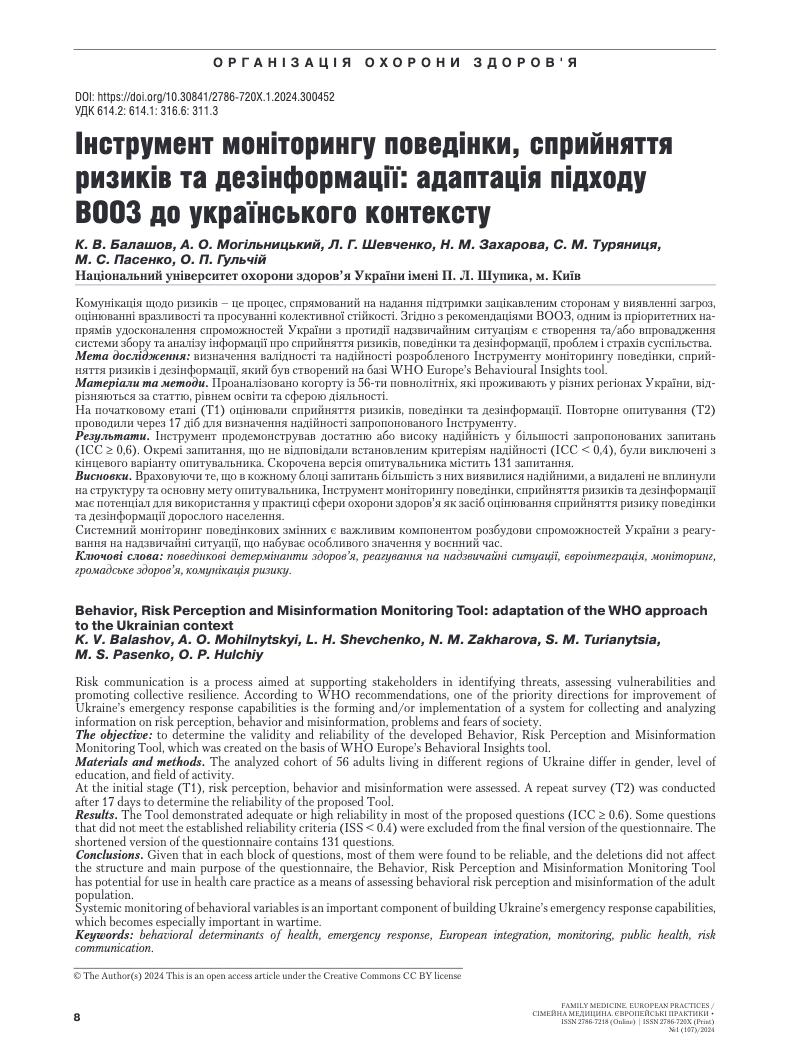
-
Source
Piloting a tool to collect information on health risk perception, health behaviours, and disinformation in Ukraine
The Joint External Evaluation in Ukraine in 2021, led by experts from WHO Europe, assessed the country's core capacities for implementing the International Health Regulations. The mission identified a significant gap in addressing the behavioural and cultural determinants of health. As a priority measure, they recommended developing and implementing a system to collect information on risk perception, behaviours, and disinformation at both community and national levels. The "WHO tool for behavioural insights on COVID-19" was proposed as an example of a tool for collecting, analyzing, and disseminating information on behavioural and cultural contexts.
A team from Shupyk National Healthcare University of Ukraine in Kyiv collaborated with the Ministry of Health of Ukraine to adapt a WHO tool for behavioural insights on COVID-19 to monitor behaviour, risk perception, and misinformation. The adaptation aims to align with the Ukrainian population's geographical, social, and cultural characteristics to address the health consequences of war, the health challenges faced by internally displaced people, the health objectives of post-war reconstruction in de-occupied territories, and the psychological impacts of emergencies and disasters.
The first stage of adaptation included focus groups with doctors and the general population to explore the proposed instrument's face validity and a pilot reliability study with a convenience sample recruited online. The next stage of the reliability study aims to investigate the instruments' reliability among the representative sample of the population in Ukraine. The study will partner with the Center for Public Health of Ukraine and the Centers for Disease Control and Prevention of Ukraine. The pilot and subsequent reliability study results could be used to inform the development of regular monitoring of behavioural determinants of health, including at the local community level.




